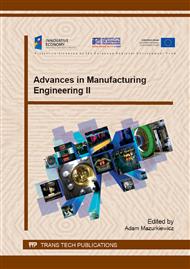p.257
p.263
p.271
p.278
p.283
p.289
p.295
p.301
p.307
Innovative Method for the Combustion of Glycerol Fraction in Solid Fuel Grate Boiler
Abstract:
The possibility of the economic utilisation of the glycerine phase and soaps will decide on the profitability of biofuel production technologies. A concept of using waste glycerol fraction, which is a by-product of esterification, as an energy source in a typical solid fuel grate boiler is investigated. Based on studies of the combustion of glycerol fraction in an adapted commercial boiler, it was found that the combustion process of glycerol fraction is very different from the combustion of solid fuels. Established technology for fuel delivery (injection into the combustion chamber) determines the dynamics of the combustion process and the intensity of oxidation, and its effects can be controlled by the characteristics of the injection of glycerol phase. It is possible to use glycerol fraction as an alternative fuel that is neutral for the environment (CO2 emission factor = 0) in a typical solid fuel grate boiler.
Info:
Periodical:
Pages:
301-306
Citation:
Online since:
August 2015
Authors:
Keywords:
Price:
Сopyright:
© 2015 Trans Tech Publications Ltd. All Rights Reserved
Share:
Citation:


